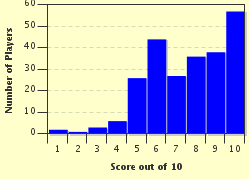Quiz Answer Key and Fun Facts
1. How did Pope John Paul II come close to death but not die on May 13 1981?
2. How did Howard Lowe (and several others) almost but not quite die in the early hours of April 15, 1912?
3. How did Hiroko Yoshizaki and her daughter avoid almost certain death from a plane crash that killed over 500 on August 12, 1985?
4. How did US Navy Captain Jim Lovell and two of his crew survive an almost certain and very remote death on April 13, 1970?
5. How was Soviet Chief Lieutenant Mikhail Krasichkov saved from dying in the, otherwise certainly fatal, July 4, 1961 disaster aboard the submarine he was serving on?
6. How did Willie Francis become the first person to not die in this particular kind of incident on May 3, 1946, only to ultimately succumb to the same reason fourteen months later?
7. How did Ivan Mikhailovich Chisov not die in January 1942 in spite of an unchecked free fall from over 6500 meters (20,000 feet) of height?
8. How did 8-year-old Werner Doehner escape death from a massive hydrogen fire on May 6, 1937 in a way that sounds quite dangerous by itself?
9. How did teenager Jeanna Giese contract a fatal disease that she, miraculously, became the first to survive in October 2004 after being subjected to an experimental treatment later known as the Milwaukee Protocol?
10. How did Trevor Rees-Jones become the only non-fatality of an accident that made headlines around the world on August 31, 1997 and triggered conspiracy theories for many years, in spite of only three fatalities?
Source: Author
WesleyCrusher
This quiz was reviewed by FunTrivia editor
bloomsby before going online.
Any errors found in FunTrivia content are routinely corrected through our feedback system.

